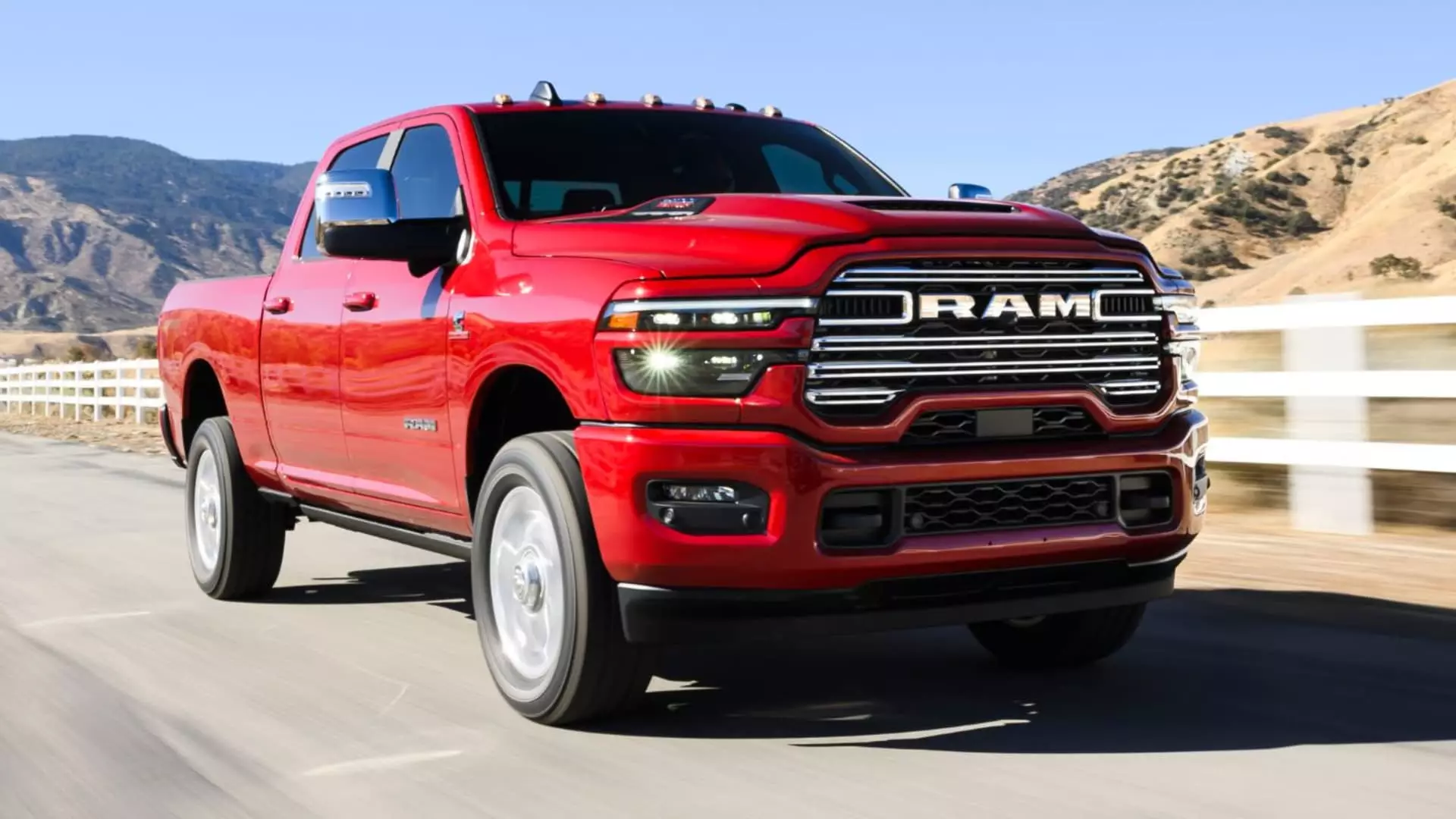Stellantis has taken bold steps to rejuvenate its Ram heavy-duty truck lineup, introducing redesigned versions of the Ram 2500 and 3500, as well as the chassis cab trucks. This strategic revamping comes in light of three consecutive years of dwindling sales for the brand, with executives keenly aware that the fate of Ram trucks hinges on consumer response to these upgrades. With a starting price increase of approximately $2,300, the upcoming model year aims to capitalize on improved engines and reimagined design aesthetics.
At the heart of this turnaround initiative is a powerful new 6.7-liter Cummins turbo diesel engine. Producing an impressive 430 horsepower and a class-leading 1,075 foot-pounds of torque, this upgrade signifies Ram’s commitment to meeting the rigorous demands of heavy-duty truck enthusiasts. The introduction of this engine promises significant advantages for customers who prioritize hauling capability and towing performance—critical elements that often dictate their purchasing decisions. For those preferring a gasoline option, the Ram lineup also includes a robust 6.4-liter Hemi V-8, delivering 405 horsepower and 429 foot-pounds of torque, ensuring that Ram retains a formidable presence in the heavy-duty market.
However, even with these upgrades, the path to recovery appears challenging. The brand reported a staggering 19% year-over-year decline in overall sales for 2024, with the Ram pickup line suffering a 16% drop. In contrast, key competitors such as Ford and Chevrolet managed to maintain stable sales, indicating that Ram is not only battling internal distribution issues but must also contend with a broad competitive landscape. Ram CEO Tim Kuniskis has openly acknowledged these hurdles, stating that the delayed rollout of the Ram 1500—while improving—has heavily impacted overall brand performance.
The Importance of Timing
Timing plays a crucial role in the automotive industry, especially regarding the introduction of new models. Kuniskis candidly noted the delays in getting the Ram 1500 into the marketplace, suggesting that the repercussions of such setbacks are felt across the entire Ram lineup. Plans to launch these heavy-duty models in the U.S. during the first quarter of the new year reflect an urgency to regain ground lost to competitors.
Stellantis’ revitalization of the Ram heavy-duty trucks represents a significant tactical effort to counteract declining sales figures. With their enhanced engines and modern designs, the new Ram 2500 and 3500 models are poised to attract the attention of heavy-duty truck consumers. Whether these strategic changes will yield a reversal in fortunes for the Ram brand remains to be seen, but the stakes are undeniably high. As they prepare to hit the showrooms, the automotive community watches with a mix of skepticism and hope. Will these modifications successfully bridge the gap between Ram’s historical legacy and its future potential in an increasingly competitive market? The coming months will be telling, as these trucks take their places on dealer lots and ultimately in the hands of consumers.

